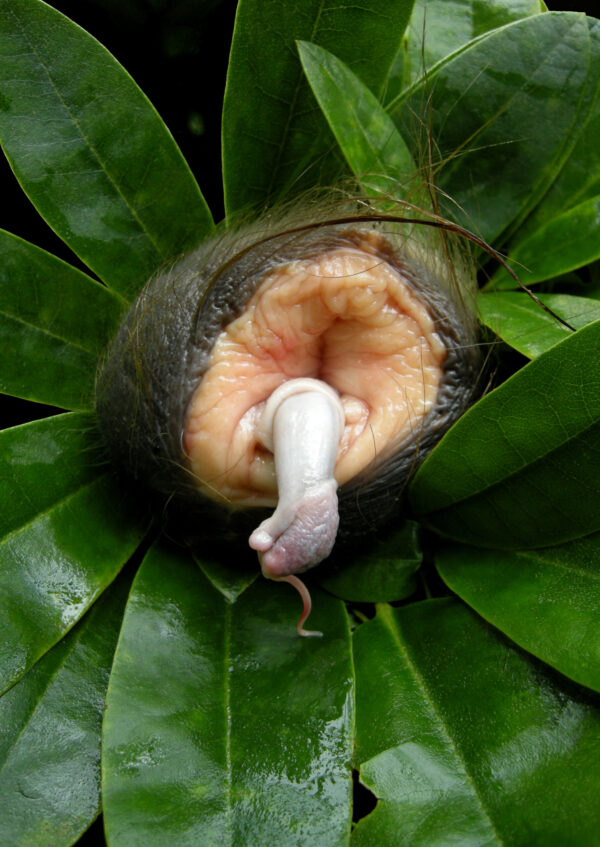Heide Hatry
Auction Ended
Vagina Vaccae, Penis Arietis, 2011
Silver halide print (of a cow vagina and a sheep’s penis)
signed on the reverse
18 x 12 in.
Retail Price: $3,800.00
Item condition: New
PROVENANCE: Courtesy of the Artist
The flowers from a series called: Not a Rose are photographic documentations of sculptures composed
mainly out of animal organs and posed in different natural environments so that they appear to be “real.”
In creating images of beautiful flowers from animal parts that most of us would find impossible to
consume (even though we eat the flesh of those very same animals, most of them victims of mechanized
mass slaughter) without a thought, I want to remind my viewer that his or her every act of mindless
consumption is an abdication of our moral and ethical substance, to arouse reflection where there had
been mere reflex.
The titles of the artwork, the names of the flowers, have been “scientized” – they are called by simple
Latin names reflecting the materials from which they have been formed.
New York-based German artist Heide Hatry studied art at various German art schools and art history at the University of Heidelberg. She taught art for 15 years while simultaneously conducting an international business as an antiquarian bookseller.
Since moving to New York in 2003 she has curated numerous exhibitions, has shown her own work at museums and galleries around the world, has edited many books and art catalogues, and has produced hundreds of unique artist’s books, treating texts of writers and exploring her own writing. Her most recent book Icons in Ash was published by Station Hill, Barrytown, NY in 2017, following Skin (2005), Heads and Tales (2009), and Not a Rose (2012).
Hatry is best known for her body-related performances and her work employing animal flesh and organs, rust, various sorts of debris, and more recently, cremated remains. Among her fundamental preoccupations are identity, gender roles (and specifically what it means to be a woman), the nature of aesthetic experience and the meaning of beauty, the effects of knowledge upon perception, the human exploitation of the natural world, and the social oblivion that permits atrocity to persist in our midst.
Auction History
Auction has finished
Auction failed because there were no bids| November 13, 2020 10:30 pm | Auction started | ||










